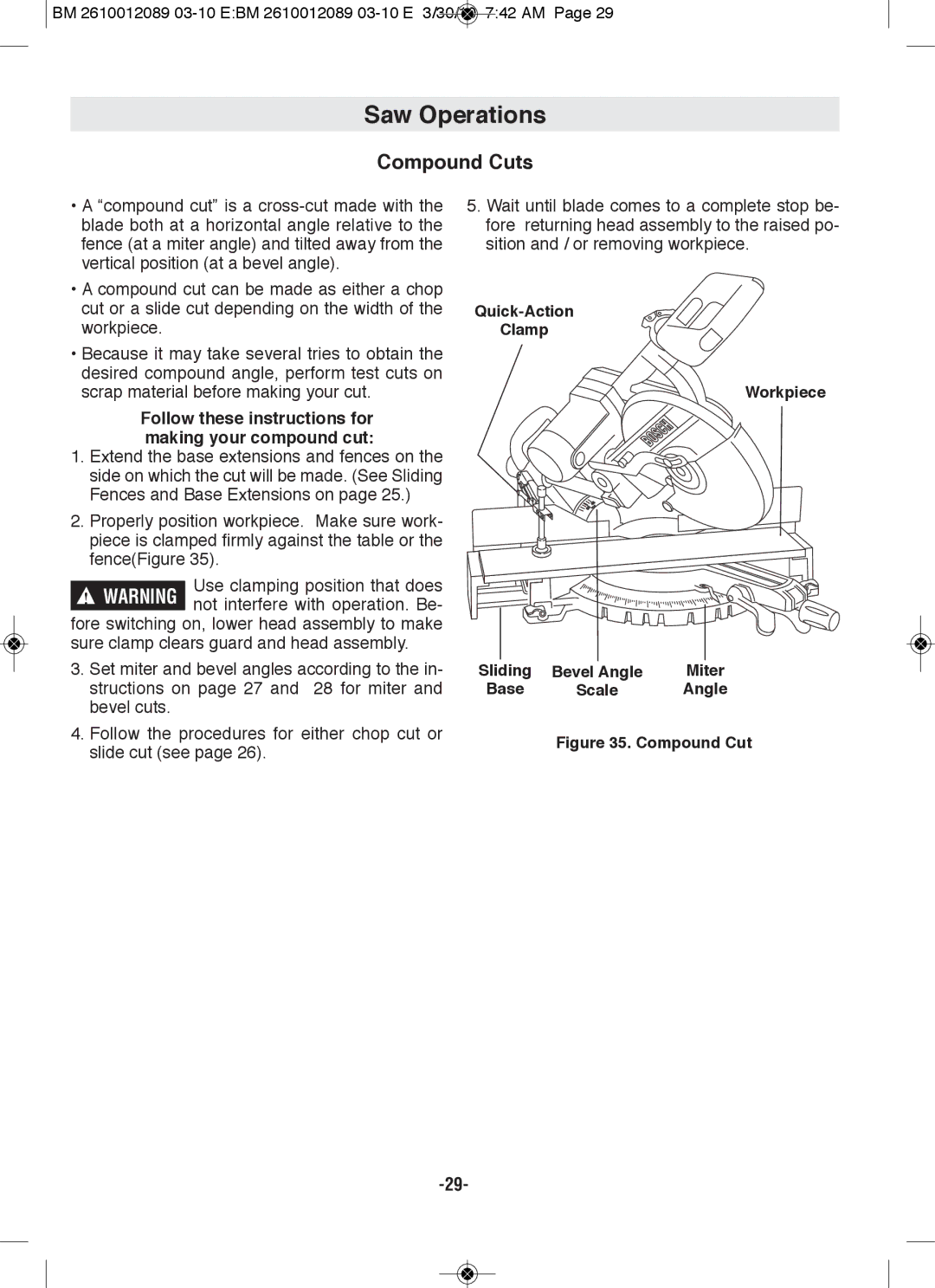
 BM 2610012089
BM 2610012089 03-10 E:BM 2610012089 03-10 E 3/30/10 7:42 AM Page 29
Saw Operations
Compound Cuts
•A “compound cut” is a
•A compound cut can be made as either a chop cut or a slide cut depending on the width of the workpiece.
•Because it may take several tries to obtain the desired compound angle, perform test cuts on scrap material before making your cut.
follow these instructions for making your compound cut:
1.Extend the base extensions and fences on the side on which the cut will be made. (See Sliding Fences and Base Extensions on page 25.)
2.Properly position workpiece. Make sure work- piece is clamped firmly against the table or the fence(Figure 35).
Use clamping position that does ! WARNING not interfere with operation. Be-
fore switching on, lower head assembly to make sure clamp clears guard and head assembly.
3. Set miter and bevel angles according to the in- structions on page 27 and 28 for miter and bevel cuts.
4. Follow the procedures for either chop cut or slide cut (see page 26).
5.Wait until blade comes to a complete stop be- fore returning head assembly to the raised po- sition and / or removing workpiece.
Quick-Action
Clamp
Workpiece
Sliding | Bevel Angle | Miter |
Base | Scale | Angle |
